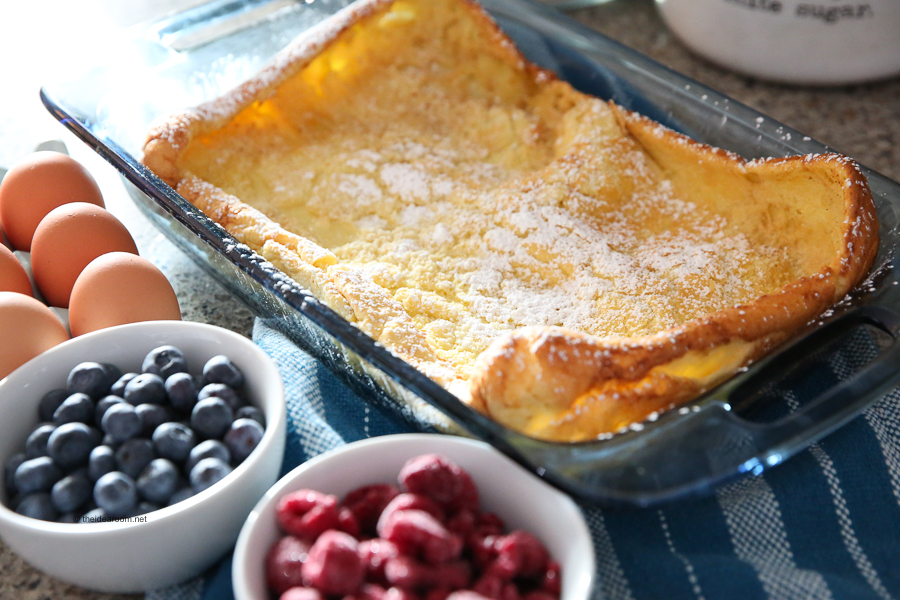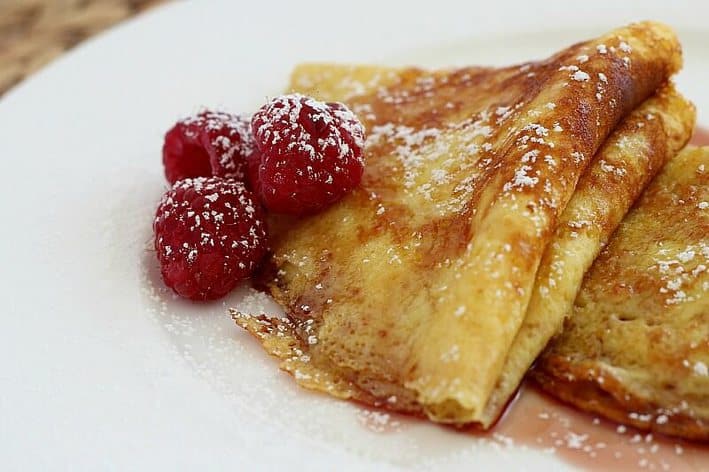German pancakes, also known as Dutch Babies, are a delightful and easy-to-make dish that is perfect for breakfast, brunch, or even dessert. These light and fluffy pancakes are made with a simple batter of eggs, milk, flour, and a touch of sugar, which is then baked in a hot oven until puffy and golden brown. The result is a deliciously airy pancake with a crispy edge and a custard-like center. In this article, we will explore the origins of German pancakes, the essential ingredients and preparation methods, serving suggestions, and a FAQ section to answer common questions about making and serving this delectable treat.
The Origins of German Pancakes

Despite their name, German pancakes are not actually from Germany. The exact origins of this dish are a bit murky, but it is believed to have been created by German-American immigrants in the United States. The name “Dutch Baby” is said to have originated from the term “Deutsch,” which means “German” in German, but was anglicized to “Dutch.” These pancakes became popular in the early 1900s and have since become a beloved breakfast and brunch item across America.
Ingredients for German Pancakes
To make a classic German pancake, you will need the following ingredients:
- Eggs: The base of the batter, providing structure and richness.
- Milk: Adds moisture and helps create a light and airy texture.
- All-Purpose Flour: The main dry ingredient that gives the pancake its body.
- Sugar: Adds a touch of sweetness to the batter.
- Vanilla Extract: Enhances the flavor of the pancake.
- Salt: Balances the sweetness and enhances the overall flavor.
- Butter: Used to grease the baking dish and add richness to the pancake.
Optional toppings and accompaniments can include powdered sugar, fresh fruit, lemon juice, maple syrup, whipped cream, or any other favorite pancake toppings.
Preparation
Step-by-Step Guide to Prepare German Pancakes
- Preheat the Oven:
- Preheat your oven to 425°F (220°C). Place a 10-inch cast-iron skillet or ovenproof baking dish in the oven to heat up while you prepare the batter.
- Prepare the Batter:
- In a blender, combine 3 large eggs, 3/4 cup of milk, 3/4 cup of all-purpose flour, 1 tablespoon of sugar, 1 teaspoon of vanilla extract, and a pinch of salt. Blend until the batter is smooth and no lumps remain. Let the batter rest for about 5 minutes to allow the flour to fully hydrate.
- Heat the Butter:
- Carefully remove the preheated skillet or baking dish from the oven and add 2 tablespoons of butter. Swirl the butter around the pan until it is completely melted and the bottom and sides are well-coated.
- Pour the Batter:
- Pour the prepared batter into the hot, buttered skillet or baking dish. The batter will sizzle and begin to cook around the edges.
- Bake the Pancake:
- Place the skillet or baking dish back into the preheated oven and bake for 20-25 minutes, or until the pancake is puffed up and golden brown around the edges.
- Serve:
- Remove the German pancake from the oven and serve immediately. It will deflate as it cools, so it’s best enjoyed fresh and hot.
Serving Suggestions

German pancakes can be served in a variety of ways to suit different tastes and occasions. Here are some serving ideas:
- Classic with Powdered Sugar:
- Dust the hot pancake with powdered sugar and serve with lemon wedges for a simple and classic presentation.
- Fresh Fruit Topping:
- Top the pancake with a mixture of fresh berries, sliced bananas, or any seasonal fruit. Add a dollop of whipped cream for extra indulgence.
- Maple Syrup and Butter:
- Serve the pancake with a drizzle of maple syrup and a pat of butter for a traditional breakfast treat.
- Savory Option:
- For a savory twist, omit the sugar and vanilla from the batter and add a pinch of salt and pepper. Top with sautéed vegetables, cheese, and herbs for a savory breakfast or brunch option.
- Ice Cream and Caramel Sauce:
- Turn the pancake into a dessert by topping it with a scoop of vanilla ice cream and a drizzle of caramel or chocolate sauce.
Tips for Success
- Preheat the Pan: Preheating the skillet or baking dish is crucial for achieving the signature puff and crisp edges of a German pancake.
- Blend the Batter: Using a blender ensures a smooth batter with no lumps. If you don’t have a blender, you can whisk the ingredients by hand until well combined.
- Rest the Batter: Letting the batter rest for a few minutes allows the flour to fully hydrate, resulting in a better texture.
- Serve Immediately: German pancakes are best enjoyed fresh out of the oven when they are still puffed and crispy. They will deflate as they cool, but they are still delicious.
FAQ
Q: Can I use a different type of milk?
A: Yes, you can use any type of milk you prefer, including dairy-free options like almond milk, soy milk, or oat milk. The texture and flavor may vary slightly, but it will still work well.
Q: Can I make German pancakes ahead of time?
A: German pancakes are best enjoyed fresh out of the oven. However, you can prepare the batter ahead of time and store it in the refrigerator for up to 24 hours. Give it a good stir before using.
Q: What if I don’t have a cast-iron skillet?
A: You can use any ovenproof baking dish, such as a glass or ceramic dish, as long as it can withstand high heat. A metal pie pan or cake pan can also work.
Q: Can I make individual-sized German pancakes?
A: Yes, you can divide the batter among smaller ramekins or muffin tins to make individual-sized pancakes. Reduce the baking time to about 15-20 minutes, or until they are puffed and golden.
Q: How do I prevent the pancake from sticking to the pan?
A: Make sure to coat the skillet or baking dish with plenty of melted butter. The preheating step also helps create a non-stick surface.
Q: Can I add flavors to the batter?
A: Absolutely! You can add a variety of flavors to the batter, such as cinnamon, nutmeg, or citrus zest, to give the pancake a different twist.
Q: What should I do if my pancake doesn’t puff up?
A: Ensure that your oven and skillet are fully preheated before adding the batter. Also, make sure the eggs are at room temperature and the batter is well blended.
Q: Can I make a gluten-free version?
A: Yes, you can substitute the all-purpose flour with a gluten-free flour blend. The texture may be slightly different, but it should still work well.
Conclusion
German pancakes are a delightful and versatile dish that is perfect for any time of day. With their light and fluffy texture, crispy edges, and endless topping possibilities, they are sure to become a favorite in your culinary repertoire. By following this recipe and tips, you can create a delicious and impressive German pancake that will delight your family and friends.
Experiment with different flavors and toppings to customize the pancake to your taste. Whether enjoyed as a simple breakfast with powdered sugar and lemon, a fruit-filled brunch treat, or a decadent dessert with ice cream and caramel sauce, German pancakes are a wonderful addition to any meal. Enjoy the deliciously airy texture and rich flavor of this classic dish and share the joy of homemade German pancakes with your loved ones.
Read Also: Homemade Payday Candy Bars: A Sweet and Salty Delight